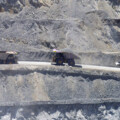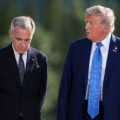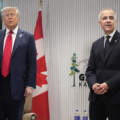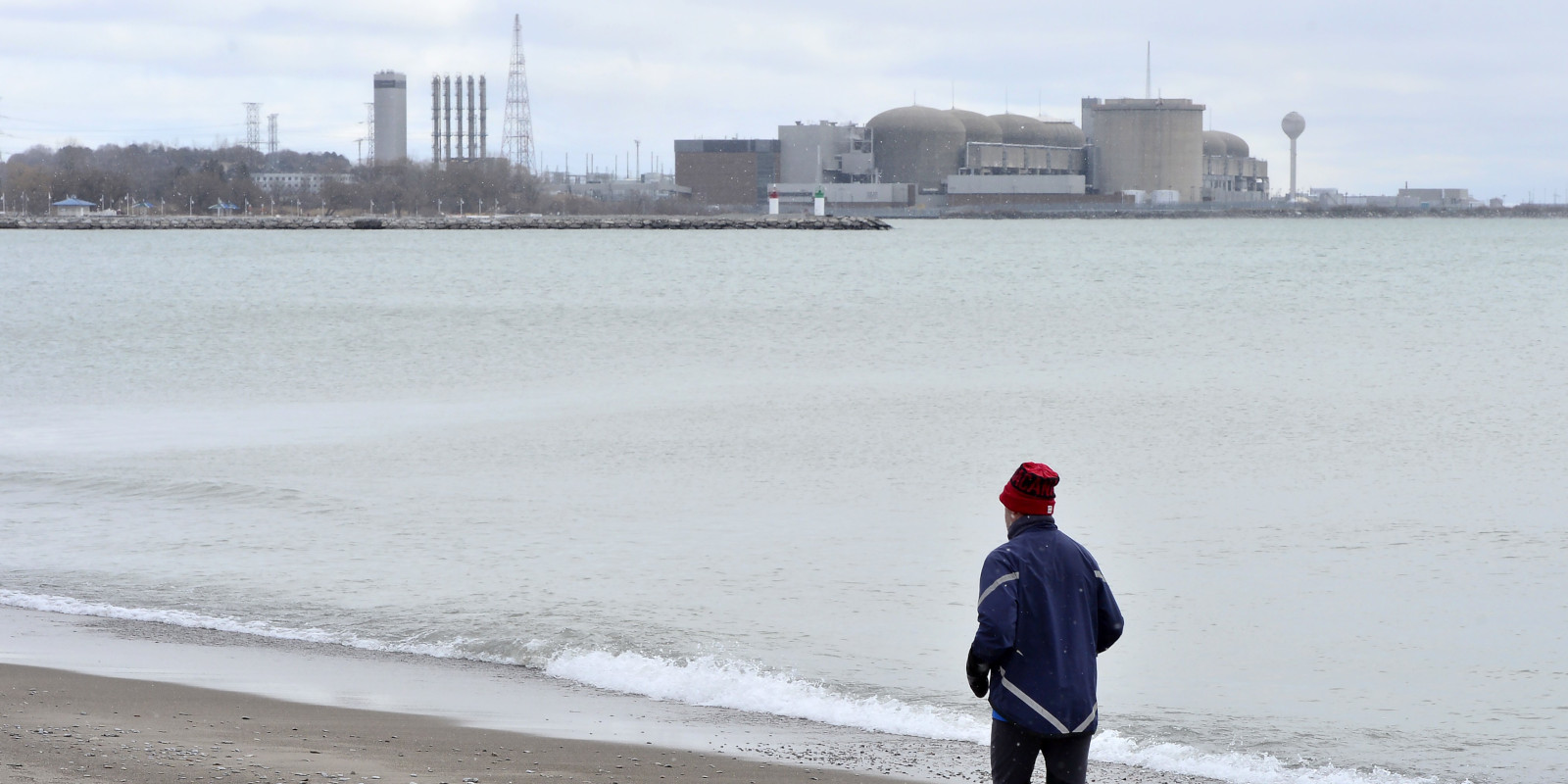With Doug Ford’s Ontario government modestly expanding its nuclear power capacity and the federal government showing signs it is open to more similar moves, climate experts are seeing a new opportunity for Canada to achieve its objective of carbon neutrality by 2050.
Earlier this month, Ontario announced it was adding a third nuclear generating station to the Bruce Nuclear Generating Station near Kincardine, with the goals of lowering electricity costs and producing lower-emitting energy. Bruce Power is operated by Ontario Power Generation, a Crown corporation of the provincial government.
“Nuclear is only being used in some parts of Canada, namely Ontario,” says Ryan Katz-Rosene, an associate professor of climate policy at the University of Ottawa. “The recent Ontario announcement positions that province as the real centre of Canadian nuclear development.”
On July 7, just two days after the Bruce Power announcement, the Ontario government declared that it was adding three Small Modular Reactors (SMRs) to the Darlington Nuclear Generating Station in Clarington. SMRs are defined as nuclear reactors producing 300 megawatts (MW) or less of energy.
Katz-Rosene says that over the last 50 years, nuclear energy has helped the world avoid more than 60 gigatonnes of CO2 emissions, while pointing out the world emitted roughly 40 GT of CO2 in 2022 alone.
In 2017, the National Energy Board reported that hydro generated the majority of Canada’s electricity at 57 percent, followed by nuclear at 15 percent, while the remainder was made up of coal, natural gas, and others.
Both the Bruce Power and Clarington projects will require federal approval, but Prime Minister Justin Trudeau has stated he is open to expanding nuclear energy options in Canada in the name of reaching net-zero carbon emissions.
“There’s a very unique opportunity to help meet the energy needs of remote and isolated, First Nations and Indigenous communities, and also remote and isolated communities in Canada through the future deployment of micro reactors,” says Jesse McCormick, the senior vice-president of research, innovation and legal affairs with the First Nations Major Project Coalition.
McCormick says SMRs also present a large opportunity for many First Nations and Indigenous communities to become investors, operators, or owners in the nuclear energy sector, even though not all provincial governments are on-side with the federal government on nuclear energy.
“You have a lot of energy and enthusiasm presented at the federal level…for SMRs as a source of energy generation that’s low-emitting and aligned with our objectives on climate change,” says McCormick. “You’re also seeing mixed support among provinces and territories. For instance, B.C. remains a space where it isn’t currently being entertained or endorsed by the provincial government.”
B.C.’s current NDP government has stated it does not plan on amending the province’s Clean Energy Act, passed in 2010, that banned nuclear power generation. On the other hand, both Alberta Premier Danielle Smith and New Brunswick Premier Blaine Higgs have recently taken steps to promote the establishment of the provinces’ first SMRs.
The National Energy Board had previously ruled out any concrete plans for Small Modular Reactors in its 2018 Market Energy Assessment.
However, by 2020, then-Minister for Natural Resources Seamus O’Regan published a message supporting the SMR Action Plan, a project supported by the federal government, provincial governments, and a large number of non-government actors including Hitachi and the University of Toronto.
According to data from the International Energy Agency, the use of renewable energy increased significantly from 2015 to 2022, but nuclear’s share of the energy pie has remained stagnant. In-fact, nuclear energy has remained a distant fourth behind gas in terms of its share of the world’s energy supply since at-least 1971.
Katz-Rosene does not think nuclear will massively expand in Canada, and that current policy frameworks leave only modest room for nuclear growth.

Many criticisms towards nuclear energy stem from concerns over how to handle the toxic waste produced by the reactors, but McCormick says Canada has a strong regulatory framework for managing spent fuel. While acknowledging that concerns surrounding nuclear projects exist within many First Nations communities, McCormick says there will be more confidence in those projects if they are First Nations-led.
“I think that is the path forward, where First Nations have been engaged effectively, have the necessary capacity to evaluate and confirm for themselves the safety, environmental, potential cultural impacts of new deployments, and are capacitated to enter into partnerships or become equity participants in these types of developments,” says McCormick.
With the highly anticipated release of Christopher Nolan’s film “Oppenheimer” on July 21st and the ongoing concerns about potential nuclear reactor damage in Europe due to the Russian invasion of Ukraine, nuclear energy has emerged as a prominent topic.
At the federal level, the NDP remain skeptical of nuclear energy, as does Green leader Elizabeth May and Liberal MP Jenica Atwin, who served as a Green before crossing the floor in 2021, despite her party’s support for the SMR Action Plan.
Tim Sayle, the associate professor of history and director of the international relations program at the University of Toronto, says that during the early stages of the Cold War, there was great hope in the potential of nuclear power in energy production and propulsion.
That changed, according to Sayle, in the 1970s and 1980s when discourse about nuclear weapons and nuclear energy became intertwined. The 1980s would see heightened tensions between the United States and the Soviet Union, as well as the reactor meltdown at the Chernobyl Nuclear Power Plant in 1986.
“I think it was the fears of nuclear weapon use that generated the worries in the first place, but these soon came to be connected with general concern about nuclear power, and nuclear waste,” says Sayle.
Sayle points out that fuel from nuclear reactors designed to produce power are capable of being used for nuclear weapons, and that Canada supplied India with a nuclear reactor for peaceful energy production that ended up being used to fuel India’s first nuclear detonation. Both Canada and the United States imposed nuclear trade restrictions on India as a result.

The cost of building nuclear reactors has also been a major deterrent to the growth of nuclear energy. In the United States, several planned reactor projects in the 1980s were cancelled after the costs ballooned threefold. In 2018, an article from Stanford University’s Earth Matters magazine stated that the clean-up from the Manhattan Project, the U.S. nuclear weapons program during WWII, costs taxpayers $6 billion per year, with a projected total cost of $300 billion.
Excluding the cost-effectiveness of handling spent nuclear energy, Katz-Rosene says the main criticisms of nuclear energy that he encounters include the environmental impacts of uranium mining, possible accidents such as meltdowns, large use of water for coolant, and security risks.
While Katz-Rosene says the concerns of environmentalists should be listened to, he believes nuclear energy is held to a higher risk standard than other sources of energy.
“All forms of energy, including renewables, pose various forms of social and environmental risks, and we’re never going to have a risk-free or problem-free energy system,” says Katz-Rosene. “I also think there’s a lot of amplification of nuclear risk when we see big headline disasters like Fukushima and current disaster risk at the Zaporizhzhia Nuclear Power Station in Ukraine.”
Recommended for You

The state of Canada’s economy halfway through 2025

‘It’s really important that we make mining fashionable again’: Ken Ash on why mining is essential to creating a happy and secure Canada

The Notebook by Theo Argitis: Trump halts trade talks, Carney’s trade-offs and John McCallum’s legacy

‘A direct attack’: The Roundtable on Trump’s surprise trade announcement and Canada’s immigration debacle




